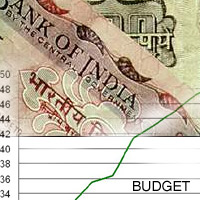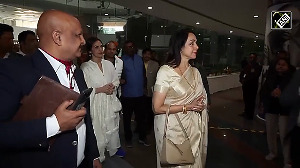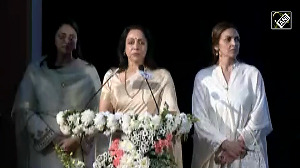 The Budget 2013 will be placed in the Parliament on February 28.
The Budget 2013 will be placed in the Parliament on February 28.
Though the Budget this year is expected to be exceptionally austere, the corporate honchos have dished out their wishlist.
Here are a few:
Sanjeev K Chaudhry, MD, SRL Diagnostics, on Budget Expectations from Diagnostics Industry
India's twelfth five year plan seeks to increase the role of the state sector in the healthcare economy while recognising the critical complementarity of the private sector in meeting the national health agenda.
The Union Budget 2013-14 must reflect the importance of private diagnostics sector as a significant pillar of India's healthcare delivery.
The Budget should recognise the costs incurred by the private sector in maintaining high quality of services and in seeking and maintaining both national and international accreditation.
Tax exemptions and concessions for NABL accredited labs will motivate the vast majority of non-accredited labs to improve their quality standards and seek accreditation.
The health check concessions announced in the last budget have not taken off and it would help if Finance Minister were to recognize the role of NABL and NABH accredited labs and hospitals in delivering these services.
To enable private sector diagnostic companies to offer cheaper prices to patients, it is important to offer import duty rebate on reagents and consumables that are essential for providing quality services.
Kiran Murthi, CEO of www.getiitBazaar.com, has the following things to say:
As far as expectations are concerned, I hope the Budget this year brings in policies and taxation schemes which benefits the e-commerce sector and SMEs.
Online shopping is truly catching on in India.
According to Assocham, estimated revenue from this sector is expected to be about $15 billion by 2015.
There are over 100 million Internet users in India and this number is expected to cross 350 million by 2015, which will make India the second-largest Internet country in the world after China.
A recent report by Google India indicates that online shopping in India registered an impressive growth of 128 per cent in 2012 as compared to 40 percent growth in 2011.
eCommerce revenues in India is expected to increase by more than five times by 2016, jumping from $1.6 billion in 2012 to $8.8 billion in 2016.
Implementation of the comprehensive GST will indeed prove to be an important tax reform for us.
After the implementation of GST, we will be able to pass on the benefits in terms of savings on products to customers and that will promote growth in this sector.
Logistics is an integral part of any business, and e-commerce is no exception.
For a lack of efficient and cheap logistics, the government should invest in infrastructure and enable easy, efficient, reliable connectivity within India.
Better logistics is required for e-commerce businesses/ SMEs to flourish in Indian rural heartlands.
The growth for these two entities (e-commerce & logistics) must be simultaneous.
A boost to retail e-commerce will give a boost to the SMEs.
The biggest problem for the SME to sell all India is the inter-state transaction documentation that restricts ecommerce transactions for SME.
Also simplified tax structure will breathe a fresh lease of life into the small and medium-scale sector.
Last but not the least, one of the major drivers for this growth will also be the strengthening of the Indian economy, leading to a higher disposable income in the hands of people who will then be more open to shopping on the Internet.
The other important factor will be stricter regulations on online transactions by the government, reducing frauds and resulting in trust building for the medium.
Dipen Shah, Head of PCG (Private Client Group) Research, Kotak Securities, has put forth the following wish-list:
The Finance Minister will present the FY2013-14 budget amid high expectations.
The initiation of the reforms process over the past 4 months has raised expectations about continuation of the same in the Budget.
Moreover, the finance minister has already indicated that this will be a 'Responsible Budget' with FY14 fiscal deficit pegged at 4.8 per cent.
Markets are now looking out for an 'achievable budget'.
The FM's priority in the 2013-14 budget will be fiscal rectitude.
A lower fiscal deficit will leave more money for the private sector and moderate interest rates.
The rating agencies are also closely watching out for any further fiscal slippage.
India needs to sustain and improve the strong capital flows of CY2012.
We expect the FM to stick to the revised fiscal deficit of 5.3 per cent for FY13 and budget for a 4.8 per cent deficit for 2013-14, based on a nominal GDP growth expectation of 13 per cent in FY14.
The reduction in FY14 target will be achieved by controlling expenditure -- both plan and non-plan, we opine.
With the given plan expenditure constraints, which may impact growth, the FM will likely rely on private sector to boost investments by giving incentives for the same in targeted areas.
However, several initiatives need to be taken even outside the budget to support and promote private investments.
Speedier implementation of allocated budgets will make these spends more effective.
We believe that, significant stress will be laid on more effective implementation of the outlays rather than any increasing outlays significantly.
Real GDP growth target for FY14 will be set at 6 per cent, we believe.
The budget will aim to provide an investment -- led supply push to growth (with private sector participation) as against a consumption -- led demand pull (higher subsidies, etc).
Targets for subsidies will likely be controlled, especially fuel subsidies.
However, containing subsidy burden beyond a point may prove difficult especially keeping in mind the high food inflation and rising food subsidy bill.
Along with the fiscal deficit, market will focus on the revenue deficit as well, we opine.
WPI inflation for FY13 is expected to average round 7 per cent; much higher versus the comfort levels.
We expect measures towards easing supply constraints, especially on primary articles.
We expect a further roadmap for Aadhar-based subsidy distribution.
However, we understand that, most supply side constraints can be addressed only in the long term.
On the other hand, non-food manufacturing inflation has already come down to comfortable levels of sub-5 per cent.
On reforms, the FM may signal the government's intention to move ahead with the reforms process on several fronts.
DTC and GST are now expected to be implemented totally WEF FY15 only.
However, some enabling measures may be announced.
There are several reform initiatives which the government has initiated outside the budget.
The budget may take some of them ahead or announce new ones including Insurance reforms, pension reforms, etc.
Critical issues like labour reforms may need broader political consensus.
We expect stability in tax rates, though there may be some adjustments in the list of exemptions, deductions, etc, keeping in mind the eventual movement to GST and DTC.
Tax exemptions on targeted investments may also be announced. We expect the divestment target to be increased to Rs 400 billion versus FY13 target of Rs 300 billion.
We do not expect any major initiatives for the stock markets.
Any reduction in STT will be cheered by the markets.
If Commodity Transaction Tax is levied, it will be negative for commodity markets.
Thus, we believe that, the focus of the markets will be on fiscal prudence, on effective implementation of investments, and on sectors which are impacted by the budget proposals.
We believe that, the budget may have the following implications for the sectors:
• Positive for banking, NBFCs, capital goods, construction, media, oil and gas, power, real estate, shipping and logistics.
• Neutral for automobile, aviation, cement, FMCG, hotels, information technology, metals





